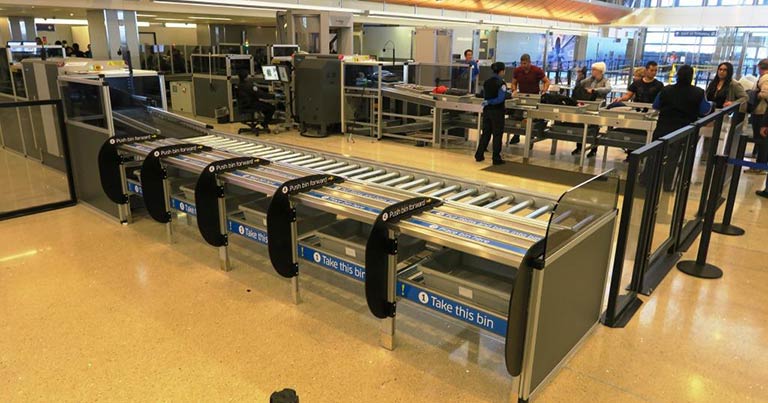
With the opening of the final two Automated Screening Lanes (ASLs), a project to upgrade the security screening checkpoint at the Los Angeles International Airport (LAX) Tom Bradley International Terminal (TBIT) is now complete. A total of 14 of the high-tech lanes have been installed in a joint project by Los Angeles World Airports (LAWA) and the Transportation Security Administration (TSA).
“We’re very excited that all 14 new Automated Screening Lanes are now available for use, as they can increase the number of passengers screened by as much as 30% over the old screening lanes, making it faster, more efficient, and less stressful for our guests to go through the TSA-screening process, and improve their overall LAX airport experience,” said Trevor Daley, Deputy Executive Director for External Affairs, LAWA. “Because there are five individual stations where travellers can place their items in trays, people who have fewer items for screening can move through faster while guests who need a little more time do not feel as rushed.”
The project began in July 2017 and involved replacing 14 of the checkpoint’s 16 lanes with the new ASLs. The remaining two lanes were also replaced, but are using the traditional screening system so they can handle odd-sized items that cannot be processed in the ASLs. The lanes were installed in groups of two and three while the checkpoint continued to operate.
“This project came in ahead of schedule and under budget,” said Aura Moore, Chief Information Officer, LAWA. “From the airport’s perspective, the collaboration and partnership between LAWA, TSA and the contractor was key to bringing these new lanes online with minimal impact to our international travellers. For the LAX guest, this is a great example of how technology will help speed their journey through the airport while also improving safety and security.”
LAX now has 27 ASLs in operation, with the technology also offered at Terminals 2, 4 and 7. Three more lanes are expected to open in Terminal 3 later this year.
Other features of the ASLs include trays that are 25% larger, and Radio Frequency Identification (RFID) tags that are attached to each bin, allowing for additional accountability of a traveller’s carry-on items as they move throughout the security screening process.






